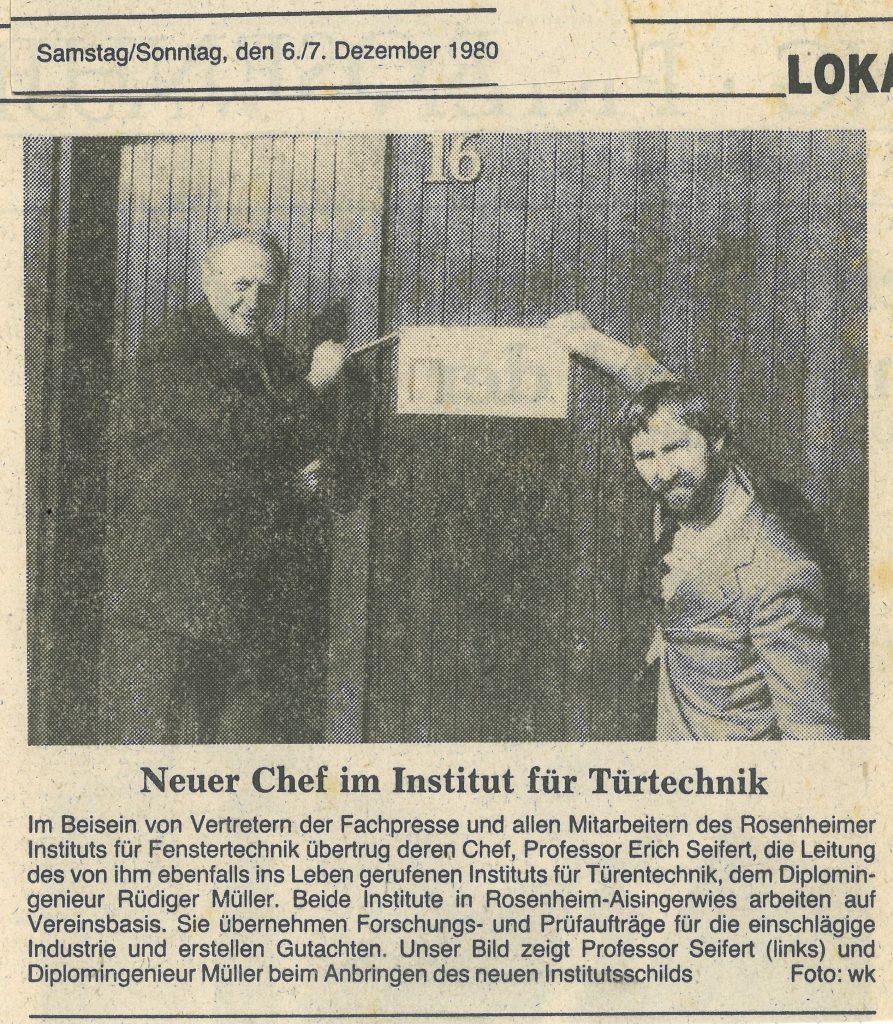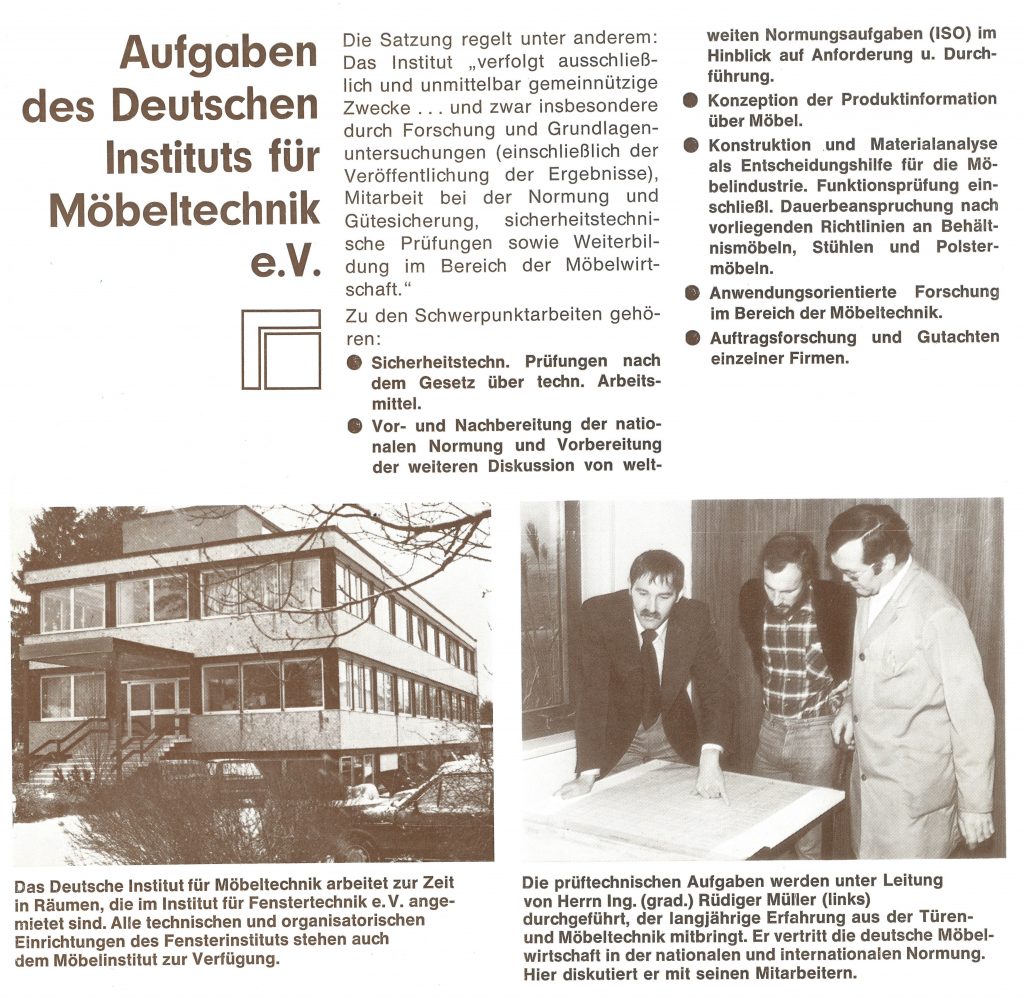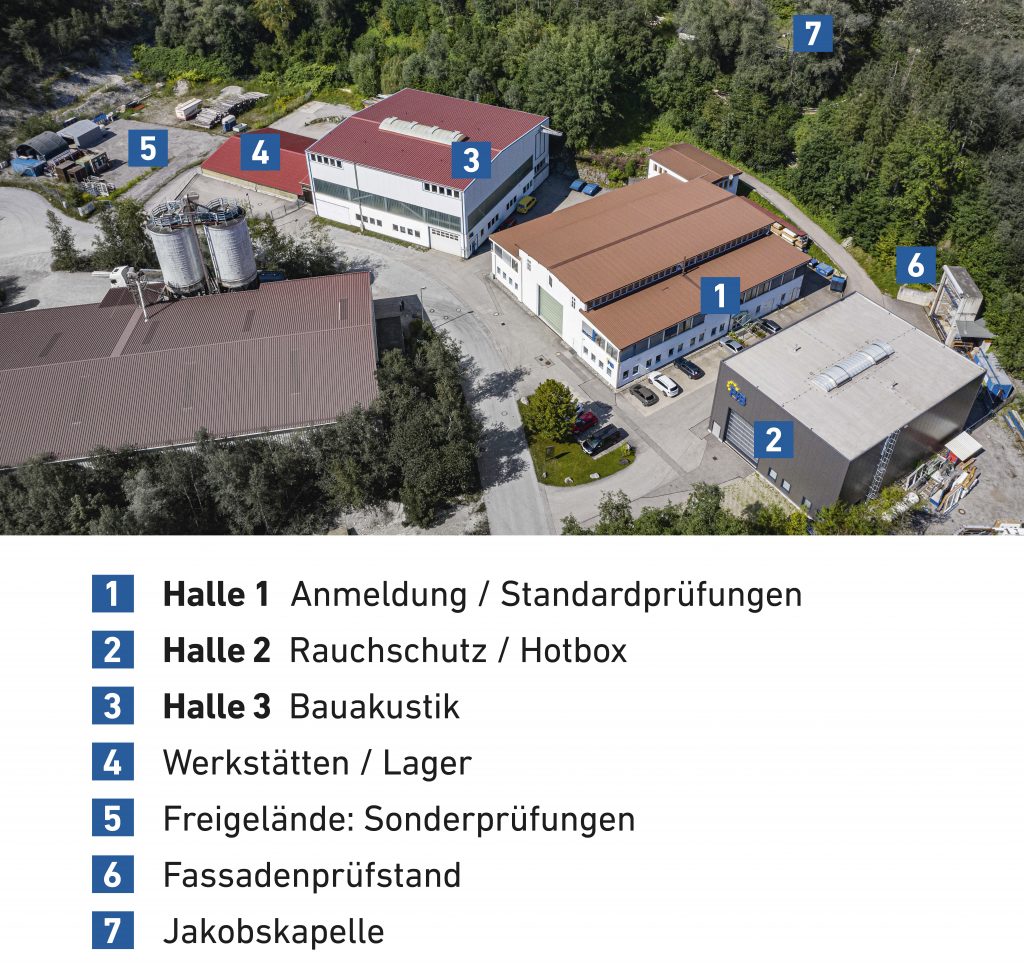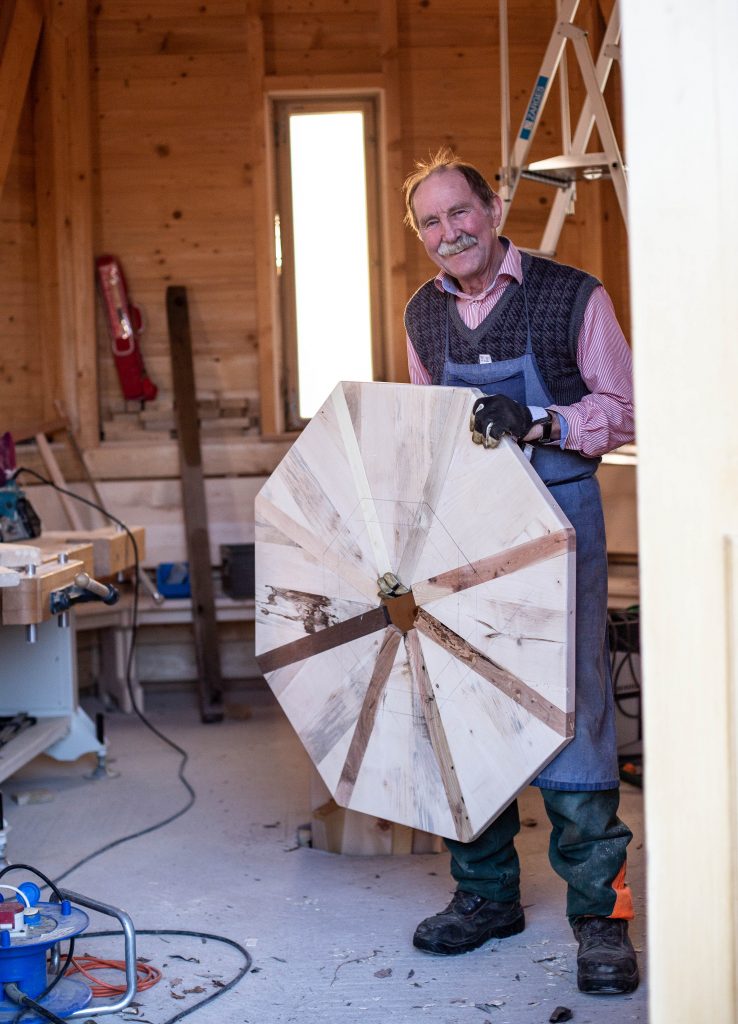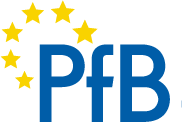From the life of a ‚door whisperer‘
Professional Career of Rüdiger Müller
My first door opened for me on May 18, 1944; it let me see the light of day.
About a year later, I was lying dusty in a pram and screaming. A bomb had hit the house next door and killed and wounded the family living there. According to later accounts from my mother, I was saved from worse because of my screaming. So fortunately, the door of life did not close on me right away. However, the dreams of this dark time were to accompany me for a long time.
At the age of 14, I cheerily rode my bicycle to Rosenheim, 6 km away, and introduced myself to the company Wilhelm Rief Fenster- und Türenfabrik KG. To my delight, I was accepted in the apprentice workshop and this opened the first door of my professional career. We were about 25 apprentices with one master apprentice who gave us an understanding of solid wood processing. Even though I was trained as a construction and furniture carpenter, I mainly worked in the window and door production. As a journeyman’s piece, I made a desk with doors and drawers. It was a varied and educational apprenticeship and even today I enjoy leafing through my neatly kept report books. In addition to machine knowledge, they show my first exposure to composite windows, box-type windows, fittings as well as exterior and interior doors. I also came early on into contact with doors thanks to my work on construction sites. I remember experiences like riding to Munich on the back of another journeyman’s motorbike with tools and spirit level in my backpack and installing high-quality walnut doors for wealthy families. A glimpse into the door of an affluent life compared to my poor one.
After three years in the military and obtaining my „Mittlere Reife“ (secondary school leaving certificate), I successfully completed my studies in „Wood Technology Engineering“ at the former Holztechnikum Rosenheim in 1971. I completed my diploma thesis at the “Institut für Fenstertechnik e. V.”. For this I spent more than 1,000 hours on thermotechnical investigations including the construction of the test samples and the installation of measuring equipment. The director at the time, Professor Erich Seifert, must have been impressed by my independent activities, as he offered me a job with the prospect of a management role later on. At that time, in October 1971, the “Institut für Fenstertechnik e. V.” was still housed in an old barrack donated by a customer and only had about eight employees. Soon I took over the overall laboratory management for testing, thermal insulation and humidity protection as well as doors. In addition, I began to deal with tests on doors as part of a research assignment. About 100 door leaves from 17 German door manufacturers had already been subjected to various climatic and mechanical loads. This was not only the basis for the European standardisation work, but also led to the foundation of the RAL Quality Association for Interior Doors (RAL-Gütegemeinschaft Innentüren) together with the Association of the Wood Material Industry (VHI) (Verband der Holzwerkstoffindustrie). In addition to setting up the laboratory for door technology, I was involved in national, European and international standardisation work as well as in the revision of the RAL quality and test regulations for windows including the monitoring of approximately 200 manufacturers. The high profile of the Institut für Fenstertechnik e. V. led to the decision to test furniture in Rosenheim as well as windows and doors. Therefore, the German Institute for Furniture Technology (Deutsche Institut für Möbeltechnik) was founded in 1979. I took over the laboratory management in the former barracks and carried out tests and research on upholstered and box furniture among other things.
In total, I shaped the field of windows and doors for over twelve years as the German representative for standardisation work. In addition to completing the research work on interior doors, I carried out the research work on requirements for external door sets. In December 1980, with my own letterhead and signet, the Laboratory for Door Technology (Labor für Türentechnik am Institut für Fenstertechnik) was founded at the Institut für Fenstertechnik. At this time, I was appointed head of the laboratory.
Despite the many tasks, it was my wish to be sworn in as a publicly appointed expert. At that time, the Chamber of Industry and Commerce for Munich and Upper Bavaria (IHK) only allowed this if you were self-employed. As I was applying for the swearing-in in the field of window and door technology, the neutrality was not given with the employment at the Institut für Fenstertechnik e. V. (Institute for Window Technology). After three years of being rejected for swearing in as an expert, I made the decision to venture into self-employment. For greater security, especially since my third child was born in January 1983, it seemed necessary to me to become self-employed in testing technology in addition to expert reports.
In order to be able to carry out inspections at my long-standing customers at short notice, I saw the only possibility, also from a financial point of view, to first set up a mobile testing station. I spotted a 7.5 t truck with the appropriate height and excess length at the side of the road, which happened to be for sale. Without much hesitation, I bought it and, together with my technically astute uncle Siegfried, we got the so-called „test mobile“ ready for testing activities in the areas of burglary resistance, air permeability, water tightness and wind load. So I was able to carry out the first tests on site in Hamburg as early as February 1983. Several years followed with the „test mobile“ both at German door manufacturers and at comparative tests in the field of European standardisation for the burglary area in Paris as well as tests in Italy and Switzerland.
At the same time, I had started the stationary expansion of the testing institute, initially in my own back building in Rosenheim (the so-called „Rocky“). With the name Prüfinstitut Türentechnik + Einbruchsicherheit (Testing Institute for Door Technology + Burglary Protection), a designed signet and the registered trademark PTE, my own testing institute was ready for the relevant market. In 1984, I drove to the open-air grounds of the BAU trade fair in Munich with the „test mobile“ and advertised for new customers. From that time on, I have been represented as an exhibitor at every BAU Munich. I was also able to present my first technical book entitled House Entrance Doors made of Wood, which was published by BAUVERLAG, at this trade fair in 1988.
The stationary set-up of the testing institute proceeded at different premises and in 1995 a branch office was established at the woodworking college in Bad Wildungen (Holzfachschule Bad Wildungen). There, tests for water tightness, wind load, air permeability and burglar resistance were carried out on windows and doors.
In 1999, a 12,000 m² plot of land was purchased on the outskirts of Rosenheim to bring the various locations together and to be able to cater to the needs of a growing customer base. The money for a large new institute building was not available, which is why, from today’s perspective, a very sustainable idea provided the solution. Near the railway station in Rosenheim, 90 tonnes of sectional steel from a dismantled hall were stored and in Prien on Lake Chiemsee, two sales buildings in timber post-and-beam construction from the Regnauer company were put out to tender for demolition.
The upcycling of this material made the construction of the first hall of the new testing institute in Stephanskirchen possible. The steel and the demolished houses were upgraded to a testing hall with a floor area of approx. 1000 m². On two floors, offices, a training room, workshops and the centrally located testing area of approx. 500 m² were created in a cost-effective and sustainable way by the company’s own efforts. It must be emphasised here that this could only be mastered through the cooperation of students and the construction management of my still active and much appreciated colleague Andreas Nerz. In 2002, the new testing institute (Hall 1) with a hall height of ten metres was ready for its ceremonial inauguration. On the occasion of this celebration, my second reference book „Das Türenbuch“ (The Door Book) was presented in the presence of the editor Juliane Goerke and handed over to Ralf Spiekers, representative of the German Crafts. No sooner had this new hall been inaugurated than oversized doors for the Lötschberg tunnel (Switzerland) could be tested there. Thus, the need for a large and high testing hall was confirmed!
A few weeks after the opening, I was approached to sell the PTE to the Institut für Fenstertechnik e. V. (Institute for Window Technology – ift Rosenheim). At the time, I thought it made perfect sense to return to the harbour of the Institut für Fenstertechnik e. V. with a richly laden ship; with a test hall that was far larger than the premises available to the then ift Rosenheim. I complied with the proposal and in 2003 the PTE was integrated into the Institut für Fenstertechnik e. V. as PTE GmbH with me as managing director. Unfortunately, the joint future, at least from my point of view, did not turn out as expected and therefore it was decided in June 2004 to go separate ways again.
Together with Udo Bergfeld, the owner of the Institute for Sound Insulation Testing (Institut für Schallschutzprüfungen) at that time, I decided to found a civil law partnership under the new company name PfB Prüfzentrum für Bauelemente and to start anew with my loyal colleague Andreas Nerz. After Udo Bergfeld unexpectedly passed away on 8 May, 2005, I founded today’s Prüfzentrum für Bauelemente (= PfB GmbH & Co. Prüfzentrum für Bauelemente KG) with the two former PTE employees Arno Urban and Matthias Demmel. Under a new flag, respectively with a new signet created and protected by my son Daniel, as well as long-time employees from PTE, PfB was able to win back many of the original PTE customers. There was a rapid upward trend – not least due to the financial support of Matthias Demmel, the high level of expertise of Arno Urban as well as the waiver of initial remuneration by the three managing directors. Thanks to our high profile in the construction elements industry, the order situation was good and new employees could be hired in a relatively short time.
PfB did not shy away from looking abroad and in 2010 a branch office was founded in Izmir/Turkey. At that time, the intention was that all windows and exterior doors in Turkey had to be declared with the CE mark. So, it was obvious to set up there; together with the managing director Nedret Surmeli, PfB GmbH Turkey was founded. Over the next few years, the necessary recognition for test certificates under building law for CE marking was obtained via the DAkkS and Türkak.
When Arno Urban left the PfB at the end of 2012, I acquired his shares in the company and became the majority shareholder.
As the building elements became larger and larger and the number of test requests increased, especially in the area of sound insulation, a sound test room was built on the one hand and another test hall with a height of 10 m and a test area of approx. 500 m² (Hall 2) on the other hand. Immediately after the turnkey handover by Goldbeck GmbH, durability and smoke protection tests as well as special tests could be started. The first test element, a sliding door with a size of 5 × 8 m, which was tested for durability by opening and closing 2o,ooo times as well as for smoke protection, already confirmed that the investment in this second test hall and a smoke protection test stand with dimensions of 6 × 9 m was the right thing to do.
In addition, an outdoor test stand was set up for testing the air permeability and water tightness of curtain wallings, including dynamic driving rain load .
In 2008, PfB seized the opportunity and acquired Professor Fritz Holtz’s testing hall and his laboratory for sound and thermal measurement technology with an area of approx. 1,000 m² including a storage hall with approx. 600 m² and a total area of 7,000 m². This should secure the expansion of the various sound and special tests for the future. Since the halls are equipped with a 25 t and 5 t gantry crane as well as an 8 t trolley crane, they are particularly suitable for testing oversized building elements as well as prefabricated houses for all sound requirements. The test halls were initially leased to the Institut für Fenstertechnik e. V. for twelve years, but in July 2020 the PfB was able to move into Hall 3 and Hall 4.
In 2015, a long-term lease for 20 years and a five-year option as well as the right of first refusal for a directly connected 2500 m² open space were taken out to for provisioning land for the future. In addition to special tests on battery containers, this area is used primarily for tests to explosion resistance and hurricane tests on windows, doors, grilles, etc.
Today I realise that I have always followed the principle that stayed with me from the planning semester during my engineering studies. A company should essentially take the following into account:
Firstly: good transport links
Secondly: no dwellings in the immediate vicinity (commercial area)
Thirdly: expansion possibilities
Exactly these three principles were taken to heart when the property was purchased in 1999. Optimal access via the freeway to the outskirts of Rosenheim, placement in an abandoned gravel pit without neighbouring residential areas and with an open space perimeter of approx. 22,000 m² sufficient space for further expansion.
It is provided for the future and the door is open for new testing possibilities as well as further tasks in the field of expert opinions, certification, monitoring and sustainability calculations! All this is due not only to my wife Gertraud Müller-Wagner and my family, but above all to my loyal employees of many years‘ standing.
Even though I handed over the reins to my co-worker Peter Mayer in January of this year, I will remain active and do a little carpentry again in my newly furnished machine and bench room. I already let my everlasting passion for wood flow into the Jakob Chapel that I built. I built it ten years after my pilgrimage from Rosenheim to Santiago de Compostela (for more information, see www.sv-ruediger-mueller.de). Here, too, sustainability was a priority and the wood needed was obtained from the forest on the property. The chapel in the shape of an octagon was ceremoniously inaugurated on 18 May 2019 on the occasion of my 75th birthday with my family including grandchildren, my siblings from Berlin, Denmark and the USA, all staff members and close friends, i.e. with about 80 guests. In May of this year, the christening of my sixth grandchild will take place in this chapel.
So all that remains for me is the wish that I can stay in communication with many doors as a „door whisperer“ until I close my last door and thus also find out what it looks like behind these doors.
